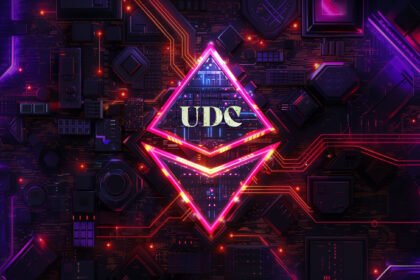Money and Economics in DangerCity
Money economics in DangerCity play an important role in telling the stories of the city’s underbelly. In DangerCity, the economy is dominated by a digital currency known as the Universal Digital Credit (UDC). Introduced decades ago as a revolutionary means of streamlining transactions and enhancing financial security, the UDC was initially embraced with enthusiasm by the populace. It promised convenience, transparency, and the elimination of physical cash, quickly becoming the backbone of the city’s economy.
However, as the years passed, the darker implications of the UDC system became apparent. The centralized control over the currency allowed the governing authorities and powerful corporations to monitor and manipulate every financial transaction. This pervasive surveillance and control led to widespread corruption, with those in power using the UDC to enforce economic and social conformity. The once-celebrated digital currency had effectively turned the city’s economy into a tightly regulated, almost socialist system, where true financial freedom was a distant memory.
Despite the oppressive grip of the UDC, a parallel economy has developed, driven by various forms of cryptocurrency. These digital currencies offer a semblance of privacy and autonomy, allowing individuals to conduct transactions outside the prying eyes of the authorities. Initially, Bitcoin emerged as the main unit of cryptocurrency, offering an alternative to the centralized control of the UDC. However, as Bitcoin gained popularity, it too became centralized, with the majority of it owned by the powerful elite. This centralization mirrored the very problems Bitcoin was meant to solve, leading to the creation of new cryptocurrencies designed to tip the balance.
Alternative Currencies
Among these alternative currencies, one stands out for its popularity and resilience: HexaX. Developed by a group of anonymous technologists and financial renegades, HexaX was designed to provide a decentralized alternative that ensured privacy and freedom. The currency quickly gained traction in the underground economy, becoming the preferred medium of exchange for those seeking to avoid the pervasive surveillance of centralized currencies. HexaX transactions are conducted through encrypted networks and black-market exchanges, symbolizing the fight for financial autonomy in DangerCity.
Alongside HexaX, other cryptocurrencies like NexusCoin and SpectraBits have carved out significant niches in the underground economy. NexusCoin was developed by a coalition of privacy advocates and tech entrepreneurs who sought to create a currency that was both secure and versatile. Its adoption was fueled by its robust security features and the ability to conduct transactions anonymously.
SpectraBits, introduced by a consortium of artists and intellectuals, was designed to support creative endeavors. It quickly became popular among the city’s creative community, facilitating transactions for art, music, and intellectual property in a way that bypassed UDC control.
HypeXLink: The Non-Fictional Social Currency
Inspired by real-world social platforms that integrate cryptocurrency, HypeXLink was introduced as a unique form of social currency. Originally developed for a fictional social platform within DangerCity, HypeXLink integrates social media interactions with financial transactions. Users earn HypeXLink through engagement on the platform, such as creating content, sharing posts, and participating in community activities. This currency has found a niche in DangerCity as a way to reward social interactions and foster community engagement. By integrating HypeXLink, DangerCity’s economy reflects real-world innovations, adding a layer of authenticity and relatability.
Historical Background of Each Currency
Universal Digital Credit (UDC)
The UDC was initially developed with the vision of creating a unified digital currency for all financial transactions in DangerCity. Its implementation involved a phased elimination of physical cash, driven by government incentives and corporate endorsements. Over time, however, the centralization of UDC control allowed authorities to shape economic policies to benefit those in power, resulting in a controlled, regulated economy. [Learn More]
Bitcoin
Bitcoin was initially created to provide an alternative to centralized financial systems. Its decentralized nature was meant to empower individuals by offering a secure and anonymous means of conducting transactions. However, as Bitcoin’s popularity grew, it became increasingly centralized, with a significant portion of it owned by the wealthy elite. This centralization led to the same issues of control and influence that Bitcoin was supposed to mitigate, prompting the development of other cryptocurrencies. [Learn More]
HexaX
HexaX was born out of a desire for financial privacy and freedom. Its anonymous founders built it on principles of decentralization, quickly gaining adoption in underground markets. HexaX became a symbol of resistance against UDC control, representing the fight for financial autonomy. [Learn More]
NexusCoin
NexusCoin was created by privacy advocates and tech entrepreneurs with a vision of a secure, versatile digital currency. Its emphasis on security and anonymity made it popular among those prioritizing private transactions. NexusCoin represents the quest for secure, anonymous financial interactions. [Learn More]
SpectraBits
SpectraBits was introduced by a consortium of artists and intellectuals who wanted a currency supporting creative transactions. It was designed to bypass UDC control and support the creative community, symbolizing the fusion of creativity and financial independence. [Learn More]
HypeXLink
HypeLink was inspired by real-world social platforms and cryptocurrencies. It integrates social engagement with financial transactions, rewarding users for their social media interactions. HypeLink links virtual engagement with economic value, reflecting innovations in digital economies. [Learn More]
Implementation and Expansion
Integrating these cryptocurrencies into DangerCity’s economy involved establishing black markets and encrypted networks for secure transactions. Community building efforts included educating potential users about the benefits and risks, offering adoption incentives, and overcoming resistance from UDC authorities. Enhancing HypeLink integration involved collaborating with social platforms, promoting HypeLink within DangerCity, and educating users on its benefits.
Economic Symbolism and Themes
The UDC’s evolution symbolizes the dangers of centralized digital currencies, highlighting potential corruption and abuse. In contrast, cryptocurrencies like HexaX, NexusCoin, SpectraBits, and HypeXLink represent the ongoing struggle for financial freedom and autonomy. These currencies embody resilience and the quest for independence, reflecting broader themes of power, corruption, and resistance in DangerCity. [Learn More]
Key Points: Money and Economics in DangerCity
Universal Digital Credit (UDC):
- Initially embraced for its convenience and security.
- Now represents centralized control and economic oppression.
- Facilitates pervasive surveillance and manipulation by authorities.
Bitcoin:
- Initially created to provide a decentralized financial alternative.
- Became centralized as the wealthy elite accumulated a significant portion.
- Reflects the challenges of achieving true decentralization and freedom.
HexaX:
- Developed for financial privacy and freedom by anonymous technologists.
- Gained traction in underground markets as a symbol of resistance against UDC control.
- Represents the fight for financial autonomy.
NexusCoin:
- Created by privacy advocates and tech entrepreneurs.
- Emphasizes security and anonymity, popular among those valuing private transactions.
- Symbolizes the quest for secure, anonymous financial interactions.
SpectraBits:
- Introduced by artists and intellectuals to support creative transactions.
- Designed to bypass UDC control and empower the creative community.
- Represents the fusion of creativity and financial independence.
HypeXLink:
- Inspired by real-world social platforms, integrating social engagement with financial transactions.
- Earned through social media interactions, fostering community engagement.
- Links virtual engagement with economic value, reflecting innovations in digital economies.
Economic Symbolism:
- UDC’s evolution highlights the dangers of centralized digital currencies, symbolizing potential corruption and abuse.
- Bitcoin’s centralization underscores the difficulty in achieving true financial freedom.
- Cryptocurrencies like HexaX, NexusCoin, SpectraBits, and HypeLink embody the ongoing struggle for financial autonomy and privacy.
- The interplay of these currencies reflects broader themes of power, corruption, resistance, and the quest for independence in DangerCity.
In DangerCity, the battle between centralized control and decentralized freedom plays out daily in the digital economy. The diverse monetary systems—from the authoritarian UDC to the rebellious HexaX, NexusCoin, SpectraBits, and HypeLink—create a complex economic landscape where each transaction tells a story of survival, defiance, and the enduring human desire for freedom. This detailed exploration highlights the intricate dynamics of DangerCity’s economy, offering a comprehensive view of its past, present, and future.


















